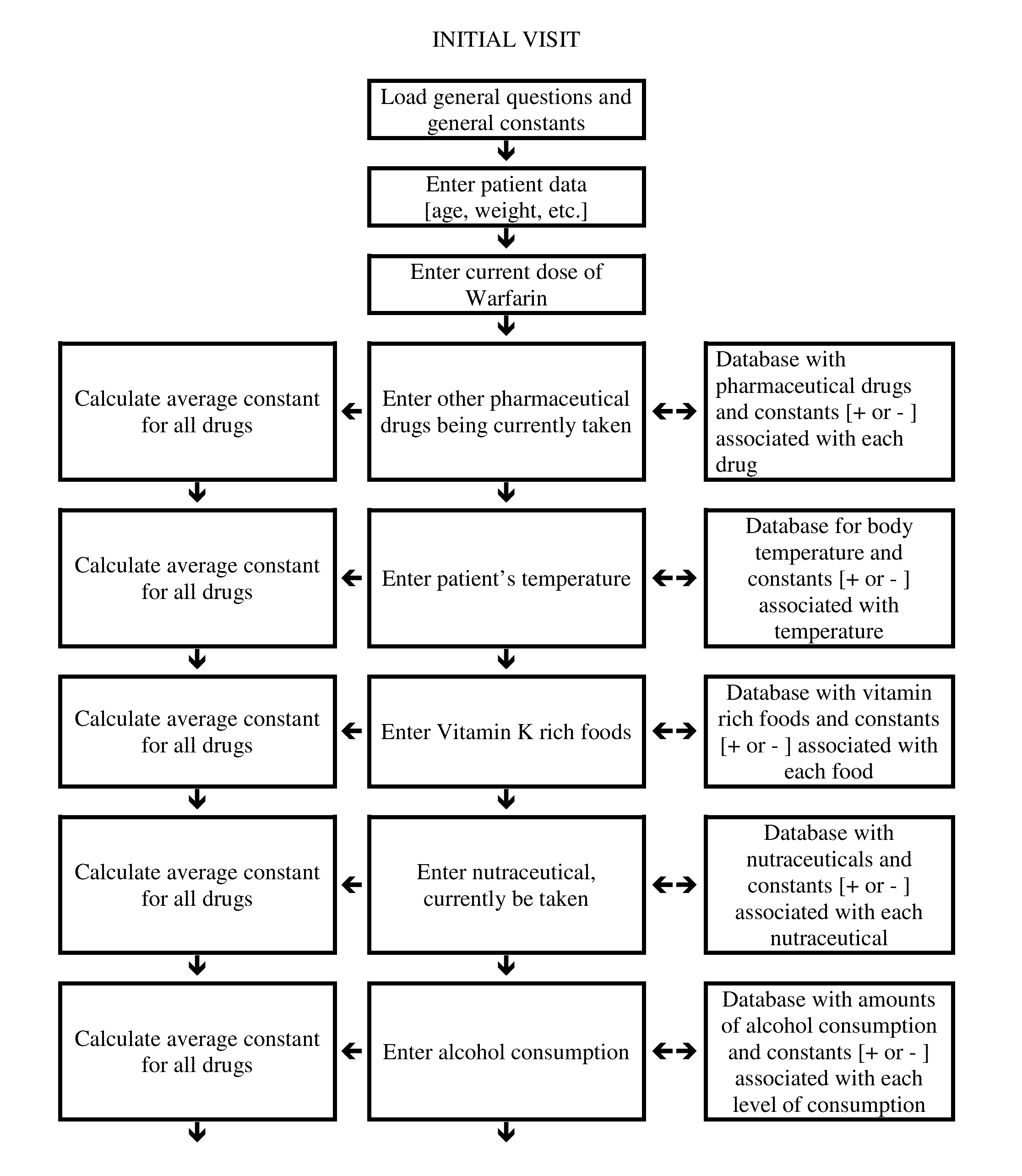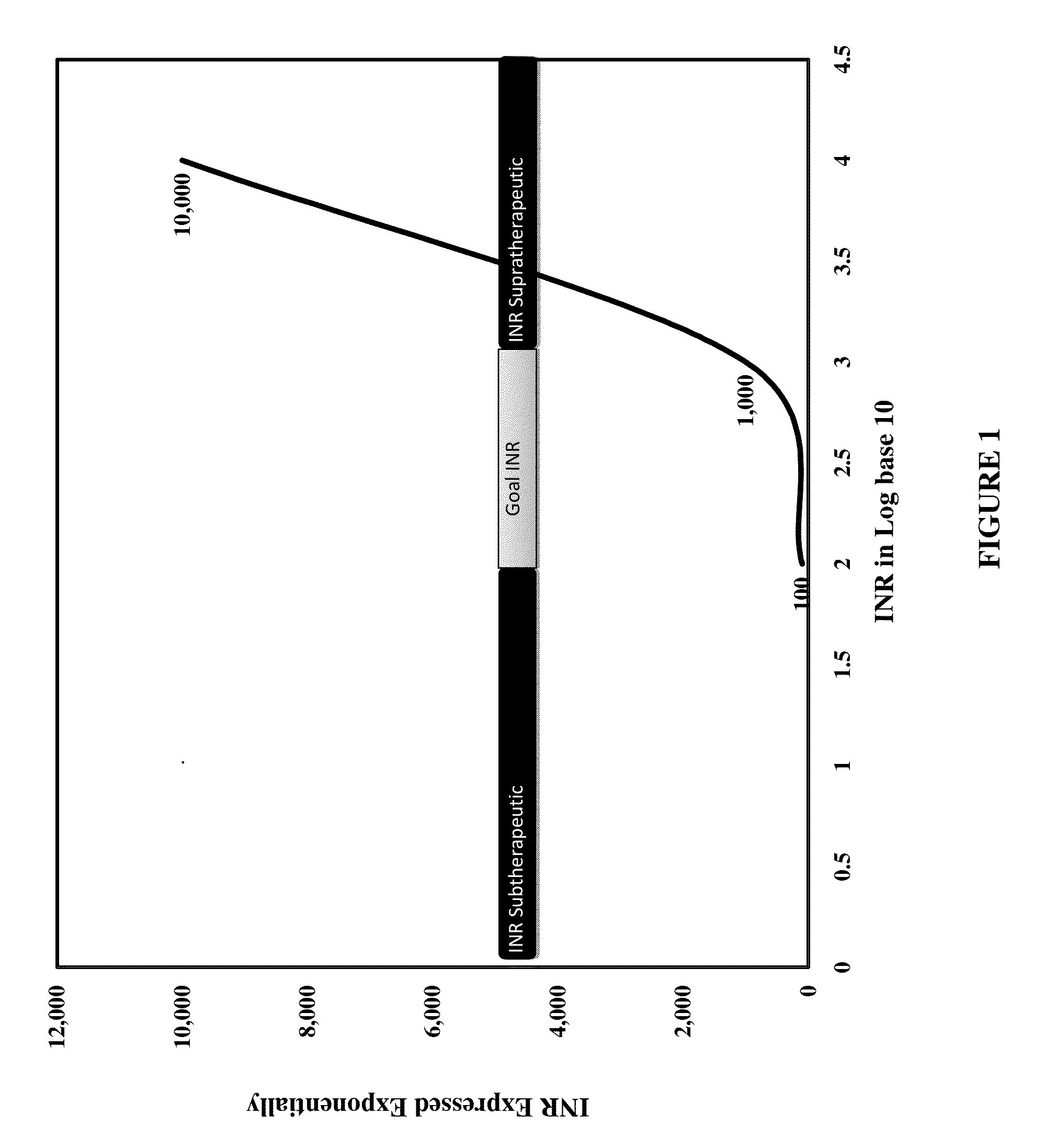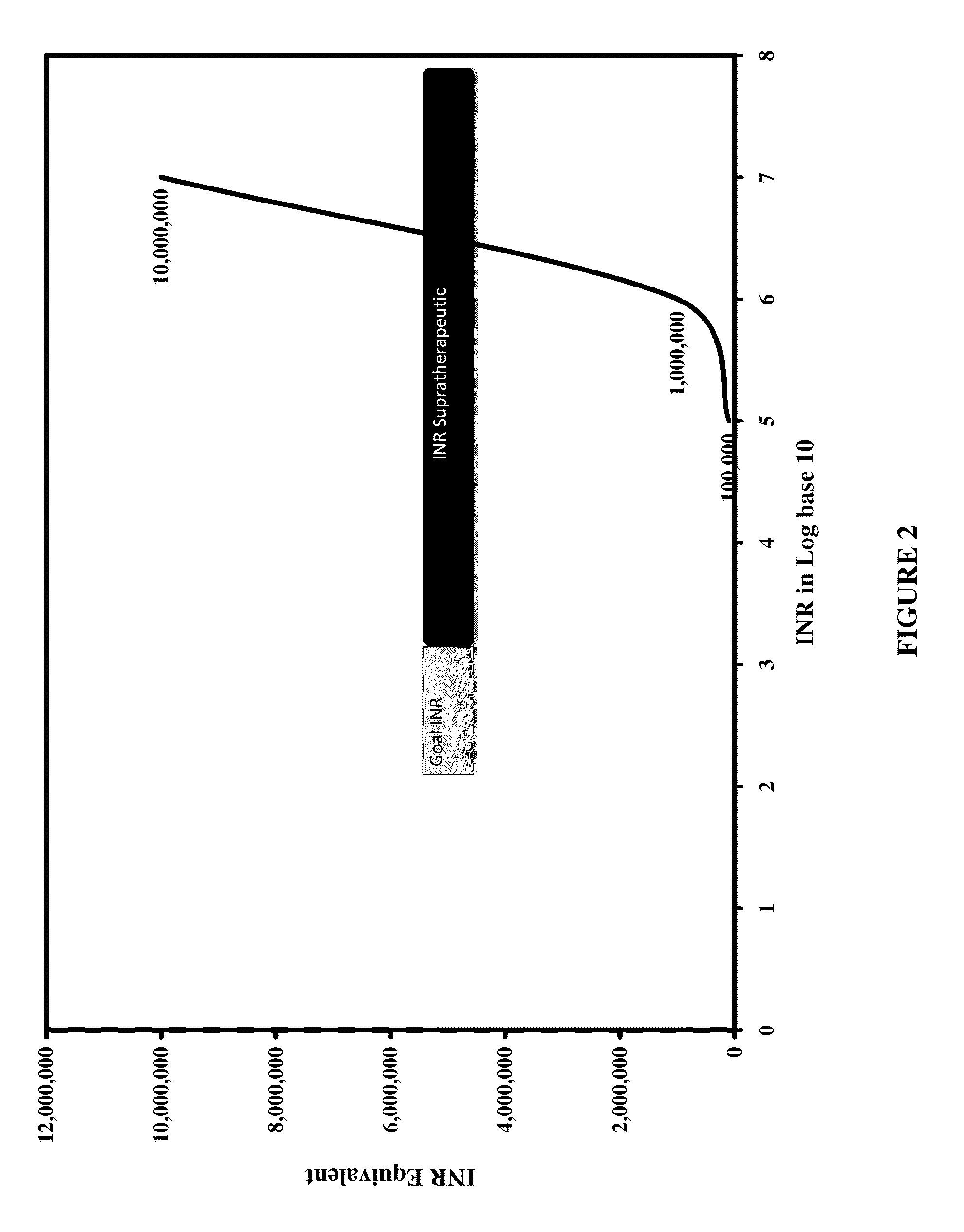Individualized Dosing Technique With Multiple Variables
a dosing technique and variable technology, applied in drug and medication, electronic clinical trials, data processing applications, etc., can solve the problems of physician inability to know all the complications, difficult task of prescribing anticoagulants for patients, and overshadowing of great benefits of these drugs
- Summary
- Abstract
- Description
- Claims
- Application Information
AI Technical Summary
Benefits of technology
Problems solved by technology
Method used
Image
Examples
example 1
[0169]A patient is referred to a physician to receive treatment with a blood anticoagulant. The physician identifies the patient as requiring long term anticoagulation treatment with Warfarin and needs specialized dosing for the treatment based on several variables. The patient is first enrolled in the database.
[0170]The system presents a series of questions to be asked by the physician and displays lists of possible answers or choices for each question. The physician collects the initial data including ethnicity, gender, reason for anticoagulation (disease state), age, time needed for anticoagulation treatment (lifetime 6 months), goal International Normalized Ratio (INR) 2-3 or 2.5-3.5, and initial set of liver enzymes lab values (FIG. 3). Additional information includes a patient's genetic factors, diet, drug interactions, illness, and / or compliance with recommended dosing schedules, or any other information that may affect a patient's response to anticoagulant therapy (Table 2)....
example 2
Patient 1
[0186]A 70 year old white man with a history of blood clots in the lungs and arm due to atrial fibrillation has high blood pressure and frequently gets skin infections. Through analysis of his past visits these are the variables that contribute to his INR (Table 4).
TABLE 4Significant VariablesCorrective CoefficientsAntibiotic Doxycycline 100 mg+1.5Diuretic Lasix 80 mg every 24 hours+1.0Diarrhea+0.5Intake vitamin K foods >3 servings−0.75Missing dose of Warfarin 1 day−0.025Aspirin 325 mg every 8 hours−0.10
Patient 2
[0187]A 32 year old woman with factor V Leiden, which is a disorder that predisposes her to clots. She enjoys wine tasting and drinks socially. She recently lost weight. She sometimes gets migraine headaches and uses Tylenol. Through analysis of her past visits these are the variables that contribute to her INR (Table 5).
TABLE 5Significant VariablesCorrective CoefficientsAlcohol >3 drinks+2.0Weight 5 kg weight loss−1.0Tylenol 650 mg+0.75
example 3
[0188]A simulation of the software and mathematical model is disclosed.
[0189]During each patient's visit, the doctor records any changes in the parameters used in the model. Table 6 shows how the data from an initial clinic visit is stored in a database, as 1 for yes and 0 for no.
TABLE 6Age 30-400age 40-500Age 50-600Age 60-701Age 70-800Age 80-900Age 90+0Man0Woman1Menopause1White1Black0Asian0Atrial fibrillation1Pulmonary embolism0Heart valve0Factor V Leiden0INR goal 2-31INR 2.5 to 3.50Liver Function normal1Kidney function normal1Genetic information0
[0190]After 4 visits this patient has a personal equation and trends can be taken from that equation (Table 7). For example, if she plans on drinking wine again or needs to be on an antibiotic the computer can adjust her Warfarin to keep it in range 2-3 by logistic regression.
TABLE 7visit 1visit 2visit 3visit 4Y INR 1-20000Y INR 2-30101Y INR 3-41000Y INR 4-50010Y INR 5-60000Y INR >60000X1 Warfarin 5 mg0111X1 Warfarin 6 mg0000X1 Warfarin 7 ...
PUM
 Login to View More
Login to View More Abstract
Description
Claims
Application Information
 Login to View More
Login to View More - R&D
- Intellectual Property
- Life Sciences
- Materials
- Tech Scout
- Unparalleled Data Quality
- Higher Quality Content
- 60% Fewer Hallucinations
Browse by: Latest US Patents, China's latest patents, Technical Efficacy Thesaurus, Application Domain, Technology Topic, Popular Technical Reports.
© 2025 PatSnap. All rights reserved.Legal|Privacy policy|Modern Slavery Act Transparency Statement|Sitemap|About US| Contact US: help@patsnap.com



